GENERAL
Do's
Whatever the child is doing (lying, sitting, crawling, standing) parents should encourage positions so that:
- Child’s head is straight up and down
- Child’s body should be straight (not bent or twisted)
- Both arms should be straight and kept away from sides
- Both hands should be in use, in front of her eyes
- Child should bear weight equally on both the sides of body
- Encourage positions that the child can manage at her development stage
- Play, talk, and give interesting things to do in these positions
Don't
- Do not leave a child in any one position for many hours as his body may gradually stiffen in to one position
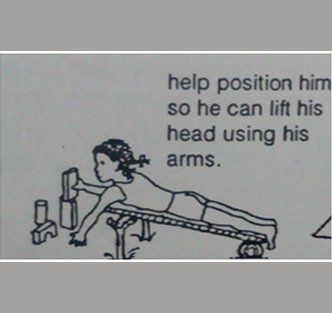
LYING AND SLEEPING
Do's
- If the child ‘s knees gets closer or scissoring is there then baby’s legs can be held apart by putting a small pillow using many thickness of diapers or just many layers of clean cloth as shown in image below.
- If the child’s body often arches backward then child should be positioned on his side as shown in image below and child can be placed in hammock swing as shown in image.
- If child does not have enough control to reach out while lying on stomach, help child lift his head by using his arms by placing child on wedge as shown in image below.
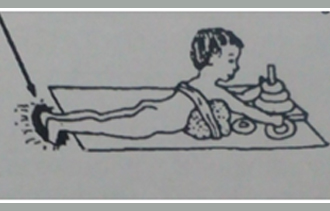
- If the child’s head always turns to the same side then try child in such position so that he has to turn his neck to opposite direction instead of preferred side by child , cervical collar can also be used for few minutes twice a day for neuromuscular facilitation.
ROLLING AND TWISTING
A child with cerebral palsy is often very stiff when it comes to twisting or rotating the main part of her body. However, such twisting is necessary for learning to walk. Rolling also helps develop body twisting.
Do's
- If the child is very stiff, first help her loosen up by swinging her legs back and forth then help her learn to twist her body and roll as shown in image below.

SITTING
The way that you help position a child for sitting also depends on the type of abnormal body positions child has.
Do's
- If the legs push together and turn in, and if his shoulders press down and his arms turn in. Sit him with his legs apart and turned outward. Also lift his shoulders up and turn his arms out as shown in image.
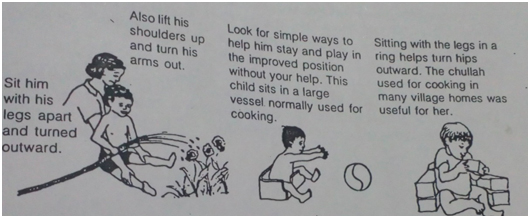
- If the child ‘s knees gets closer or scissoring is there then baby’s legs can be held apart by putting a small pillow using many thickness of diapers or just many layers of clean cloth as shown in image below.
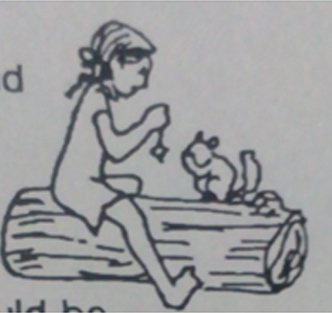
Don't
- Avoid child sitting in W Sitting position as shown in image below as this can encourage contractures and loosen hips and knees.
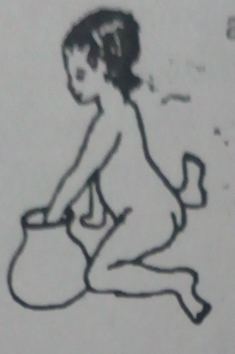
MOVING ABOUT
DO’S
- Children with cerebral palsy are usually delayed in walking, they need other ways to get from place to place. Aids for ways to get from place to place should provide corrective positions .The following examples are all designed to help prevent knock knee deformity as shown in image below.
